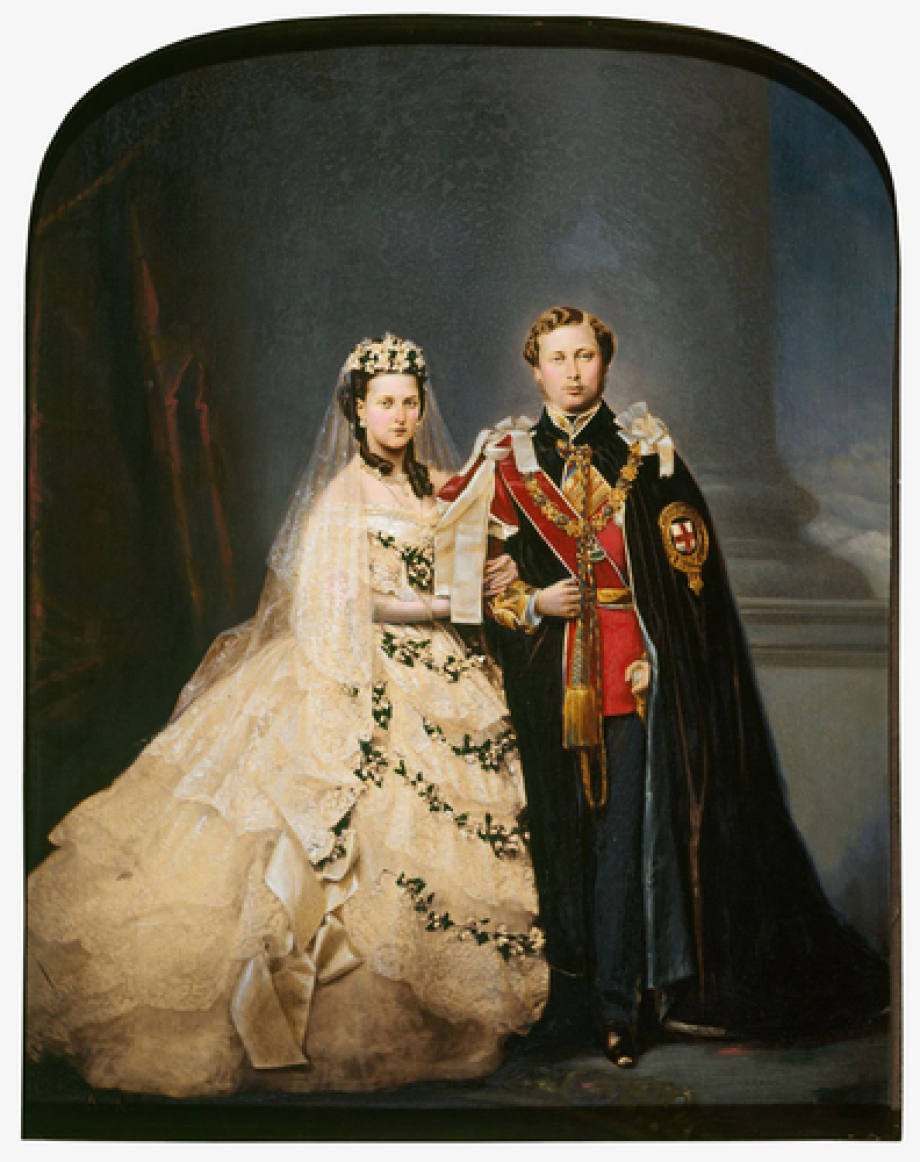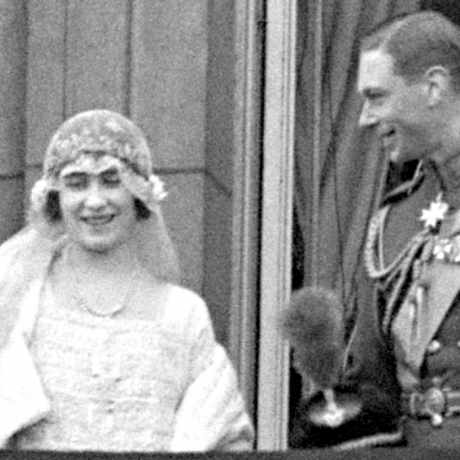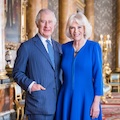On 12 October 2018, Princess Eugenie and Mr. Jack Brooksbank will marry at St George's Chapel, Windsor Castle, surrounded by their family and friends. After 100,000 applications, 1,200 members of the public have been invited to the grounds of Windsor Castle. Other guests in the Castle Grounds will include representatives of charities and organisations supported by the couple.
By comparison the marriage of the future King George V to Princess Mary of Teck (later Queen Mary) 125 years ago in 1893 was a relatively quiet and private affair. The couple were married at Chapel Royal at St James's Palace, which barely seats 100 people,
Whilst the public involvement and celebrations at Royal Weddings may have changed over the years, many traditions at Royal weddings have remained the same – although varying slightly from wedding to wedding.
Take a look at some of the fascinating traditions seen at previous Royal Weddings.
Wedding rings of Welsh Gold

The wedding rings of Queen Elizabeth The Queen Mother, The Queen, Princess Margaret, Princess Anne, and Diana, Princess of Wales were all made from the same nugget of Welsh gold, which came from a Welsh mine, Clogau St David's at Bontddu.
There is still a minute sliver (one gramme) of this original piece of gold left, which is in the custody of the Privy Purse Office. In November 1981, however the Royal British Legion presented The Queen with a 36-gramme piece of 21 carat Welsh gold, which is held by the Crown Jewellers to be used for the Royal Wedding rings of today.
A Sprig of Myrtle

Many Royal Brides across the generations, from Her Majesty The Queen to The Duchess of Cambridge and The Duchess of Sussex, have chosen to carry a sprig of Myrtle in their bouquets. This tradition dates back to the wedding of Queen Victoria and Albert’s eldest daughter, also Victoria.
Myrtle, which represents love, fertility and innocence, has been grown at Osborne House, Queen Victoria’s holiday home on the Isle of Wight, for about 170 years. It was first given to Queen Victoria in a posey by Prince Albert’s grandmother in 1845. The descendants of this plant are still in the grounds of the house today.
Tomb of the Unknown Warrior

Almost 100 years ago, Lady Elizabeth Bowes-Lyon (known as Queen Elizabeth, the Queen Mother) established a long-held Royal Wedding tradition. As Lady Elizabeth entered Westminster Abbey on her wedding day, the Royal bride stopped to lay her flowers at the Tomb of the Unknown Warrior. The gesture was in remembrance of her own brother, Fergus, who died at the Battle of Loos in 1915 and to pay tribute to the millions of others killed and injured in World War I.
As Lady Elizabeth laid her flowers on the tomb as soon as she entered the abbey, she was the only Royal bride to actually walk down the aisle without her bouquet. Many Royal brides have adapted the gesture since then, laying their flowers on the tomb as they leave the church instead of when they enter.
Official photographs

Royal weddings have long been captured by official photographs, often taken between the ceremony and wedding reception.
King Edward VII and Queen Alexandra's wedding (then Prince and Princess of Wales) was the first Royal Wedding since the introduction of photography as a reliable recording medium and numerous photographs were taken of the bride and groom. Back then, monochrome images were often hand coloured to give the appearance of a painting.
Postcards were a highly popular collecting craze in the early 20th century, and a way in which the Royal Family could share events such as Royal Weddings with the public in a new and highly popular way. The photo above, of Princess Alexandra of Teck with her husband and bridesmaids, is part of a collection of photographs, postcards, and documents belonging to Miss Annie Gordon, a former housemaid of the Royal Household.
Orange Blossom
For her wedding to Prince Albert on 10 April 1840, Queen Victoria did not wear a tiara, instead wearing a wreath of orange blossom, an emblem of chastity.
Between 1839 and 1846, Prince Albert presented Queen Victoria with a number of pieces from a beautiful orange blossom parure (matching set of jewellery) to mark significant moments in their lives. In 1845, Albert gave Victoria orange blossom brooch and matching earrings, and the following year his gift of an orange blossom wreath celebrated their wedding anniversary.
Queen Victoria's choice of floral emblem and white silk wedding dress became the standard wedding attire for generations of Victorian brides. Princess Victoria, Princess Alice, Princess Helena, Princess Louise, Princess Louise Margaret of Prussia, Princess Helena of Waldeck and Pyrmont, Princess Beatrice and Princess Alexandra, all had orange blossom as part of the design of their wedding dresses.

This tradition continued into the 20th century; Princess Mary of Teck (later Queen Mary), also incorporated orange blossom into her dress. On her marriage to The Duke of York (future King George VI) Elizabeth Bowes-Lyon chose to wear an orange blossom wreath, which also featured white roses of York.
When The Queen married The Duke of Edinburgh in 1947, orange blossom was again part of the design. Round the hem of The Queen's dress, a border of orange blossom was appliqued with transparent tulle outlined in seed pearls and crystal.
The Royal wedding 2018




